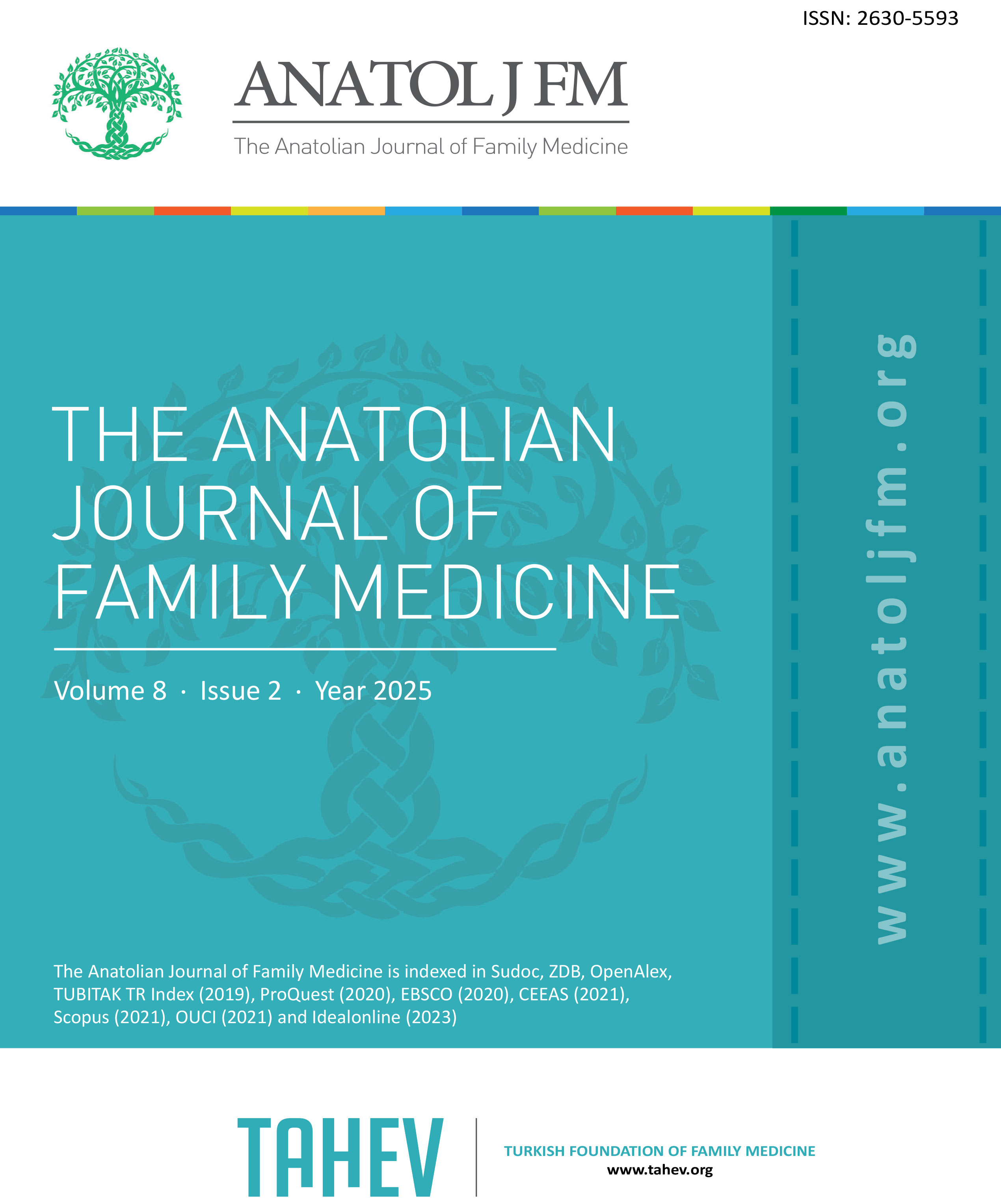Quick Search
The Relationship between Framingham Risk Score and Cardiovascular Disease Knowledge Level in Adult Individuals
Armağan Tanışkan1, Seda Ahçı Yılmaz2, Berrin Telatar21Çınarcık Family Health Center, Yalova, Türkiye2Department of Family Medicine, Fatih Sultan Mehmet Suam, İstanbul, Türkiye
INTRODUCTION: This study aims to calculate Framingham risk levels in patients aged 40 and above and to examine their relationship with the cardiovascular disease risk factors knowledge level (CARRF-KL) scale.
METHODS: This cross-sectional and analytical study was conducted with 220 voluntary participants aged 4079 who visited the family medicine outpatient clinic. Participants knowledge levels were assessed using the CARRF-KL, while their 10-year cardiovascular disease (CVD) risk was evaluated using the Framingham risk score. Participants diagnosed with diabetes or CVD were classified as high-risk.
RESULTS: A total of 220 participants were enrolled in the study. The mean age of the participants was 56.8±9.6 years, with 142 (64.5%) being female and 121 (55.0%) having an educational level of middle school or below. The median CARRF-KL score was 23.0 (12.028.0). According to the Framingham risk classification, 58 (26.4%) of participants were in the low-risk group, 36 (16.3%) in the moderate-risk group, and 126 (57.3%) in the high-risk group. A significant difference was found between CARRF-KL scale scores according to Framingham risk levels (p=0.031).
DISCUSSION AND CONCLUSION: The present findings indicate that knowledge of disease risks alone is insufficient for adopting preventive measures or lifestyle changes. Therefore, it is essential to educate and motivate patients in primary healthcare settings regarding the importance of a healthy lifestyle in reducing CVD risk.
Manuscript Language: English




















